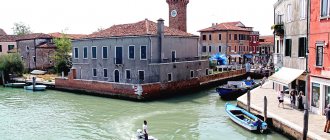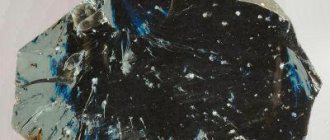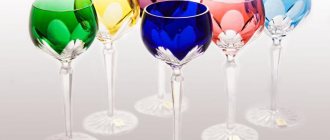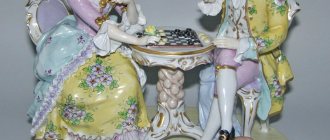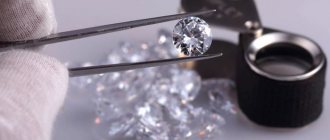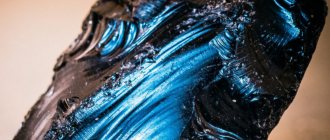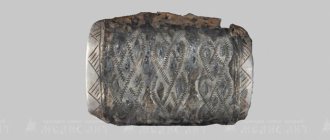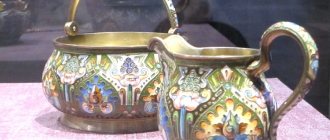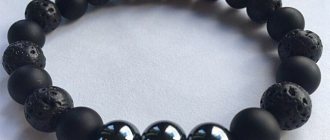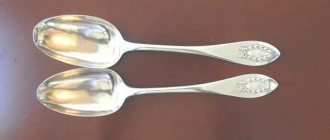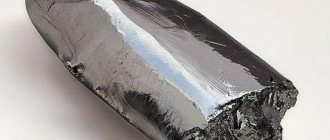The glass industry of Venice has been known since the 8th century. However, at first the glass was not of the highest quality. But one important event changed this industry forever.
Photo: Tania Miron
Photo: Tania Miron
In 1204, thanks to the 4th Crusade, the glassmaking secrets of the great Byzantine Empire were taken from Constantinople. This date can be considered the starting point in the history of Venetian glass.
In the 13th century, numerous glass workshops were located in Venice itself. But glass production is associated with fire; it threatened the wooden buildings of the city with fire. Therefore, it was soon decided to move the workshops first outside the city limits, to a separate island. Since then, Murano has become a center for the production of Venetian glass.
Chandelier Fauve, Barovier&Toso.
Chandelier Fauve, Barovier&Toso.
The flourishing of the fishery
In 1450, thanks to the discovery of Angelo Barovier, a real technological revolution took place. It led to the development of glass making over the next two centuries. Barovier managed to create glass of unprecedented purity and transparency, similar to natural rock crystal; for this reason it was called "cristallo" (crystal).
He is also credited with the invention of white opaque “milk” glass, similar to Chinese porcelain, and “chalcedony” glass, imitating the shades of natural chalcedony stone.
Sketch of an 18th century chandelier from the archives of the Barovier&Toso factory.
Sketch of an 18th century chandelier from the archives of the Barovier&Toso factory.
In the 16th century, Murano glass was in full glory. Glassblowers, thanks to 400 years of tradition, improve materials and techniques, bringing their products to unimaginable heights of subtlety, sophistication and decorativeness. The works of the masters are immortalized in the paintings of the greatest artists of that time - Titian and Veronese.
Murano glass
In the post of gossip girl pechka it is written about Millefiori (Italian millefiori - “a thousand flowers”) - a type of mosaic glass with a floral pattern.
This is one of the techniques used to make Murano glass. The surface of the finished product resembles a flowering meadow, which explains the name. These pieces are assembled like a mosaic of small glass fragments, then soldered together under high heat, and are often topped with a clear glass lens, which adds dimension to the design.
From Wikipedia:
The method of making glass using the millefiori technique was invented in ancient Egypt. In the 15th century, Venetian glassblowers mastered the millefiori technique. By the 18th century, however, the secrets of making this glass were lost. The revival took place only in the 19th century, when Murano masters not only restored, but also improved the lost technologies.
From this time on, glass products using the millefiori technique were produced not only in Italy, but also in England and France. However, millefiori is primarily associated with Venice, being one of the most popular types of Murano glass. Beads, pendants, paperweights, vases, decorative plates, etc. are made from it.
Although a large number of items are made using the millefiori technique these days, Murano artisans still carry out the entire process by hand, so that each item they create is unique.
The small pieces that make up this mosaic roll are made separately. The master chooses the color for the middle, melts the glass and gives it the shape of a cylinder. Then the top of this cylinder is covered with glass of a different color. When molten, glass is viscous and fluid, like very thick honey, so this is not so easy. It is necessary to achieve uniform coverage without thickening or narrow spots. The next step is the next color, and so on. The more layers there are in this “sausage”, the more interesting it will show itself at the cut site.
When all the layers are ready and fused to form a thick cylinder, it is pulled out into a long rod, which is then cut into small rounds. They are called Murini (Murins). And the real magic is when murini stick to the future bead or vase (in fact, a red-hot piece of glass base). They are fused with the base into a single whole. It is very interesting when some large product is then blown out of this base. Murines stretch across its surface in all their glory.
With the help of murini, three-dimensional underwater worlds, shells, fish, and corals are created. The voids inside the sea sponges indicate that their core was made of transparent glass.
And, of course, beads. Especially antique ones.
Murano (Venetian) glass is glass made using ancient technologies that originated on the island of Murano near Venice. Today there is a museum, glass workshops, and exhibitions. The Italian city of Venice was founded in 607. Workshops for creating glass immediately began to appear there. Craftsmen invented original ideas and successfully brought them to life. Many churches in Italy are decorated with stained glass and mosaics made from this glass.
The production of glass household items in Venice began in the 10th century. About 1000 l. ago, Benedictine monks invented a method for making glass containers for liquor. During the Crusade of 1204, when Constantinople was captured, masterpieces of Byzantine glass art were brought to Venice, which are still in St. Mark's Cathedral today. Venice receives the title of the central city in the world for the production of glass and glass products.
At the beginning of the 18th century. Because of the increased fire danger, craft workshops were moved to the vicinity of Venice and then to the island of Murano. Venice and the countries of the West and East were connected by trade relations. Murano glass is becoming one of the export items. Only hereditary masters could engage in this profession. The “Golden Age” of Venetian glass is the 16th century. It is valued all over the world due to its transparency, rich colors and fancy decorative elements. At this time, popular products made from Murano glass were wide glasses on graceful long legs with decorations, bottles in the shape of birds or flowers.
Previously, only hereditary masters could produce Murano glass. In the 17th century, the popularity of Venetian glass faded. However, such interior items as Venetian mirrors and Murano glass chandeliers decorated with exotic flowers were still highly valued. From 1797 to 1806 The island of Murano in Venice was occupied by French troops. Production fell into decline. But the unique craft was destined to be reborn again. In the 19th century A. Salviati was the founder of glass production on the island. Murano, preserving glass manufacturing technology. Gradually, art is regaining its position and continues to be highly valued throughout the world. There are several varieties of Murano glass
Vetrofusione is a technique for fusing glass consisting of several layers. The layers are soldered together, connected, flowing into each other. 18K gold foil or 925 silver foil is often used as a background.
Murrina is the name given to mosaic glass, the end result of which in cross section is a pattern of flowers, stars, eyes, multi-colored circles, ovals and other symmetrical and asymmetrical shapes.
Pendant using the Vetrofusione technique with the addition of all kinds of murrines of different shapes and shades
Millefiori - "thousand flowers" - a technique that uses murrines; the products look like a colorful field woven from flowers.
Latticino - literally "little milky shores" - is a rod of frosted mosaic glass, twisted in a spiral, similar to a candy cane. Can be single-color or multi-color.
“Lattimo” - (From the Italian “latte” - milk). Opaque white glass produced in Murano for the first time in the 15th century to imitate Chinese porcelain.
Filigrana - obtained by introducing thin colored threads into a mass of transparent glass, which represent a chaotic weave or a regular mesh.
Zanfirico is a technique of semi-filigree work, when at the final stage of manufacturing a glass product, it is completely “wrapped” with glass coils, placing the coils very close to each other. Zanfiriko mesh rods are used in the manufacture of costume jewelry.
A lume is a technique for manually drawing figurines from hot soft glass over an open fire, in which practically no blowing is used. As a rule, all small voluminous objects are made using this technique.
Perle - literally, “pearls” - beads made of Murano glass, made using the a lume technique with constant rotation of the workpiece. As a rule, they contain gold or silver foil, murrina or colored glass.
Soffiato - derived from the verbs soffiare or to blow - to blow, to blow. Soffiato is a classic ancient glassblowing technique that is used to create parts of a necklace or individual beads that are hollow inside. Thus, even large beads or elements are not and do not look heavy, unlike beads produced using the lume technique over an open fire. A special glass tempering procedure, when blown elements are slowly cooled in a special oven for 12 hours, makes them non-fragile. The Russian market is currently filled with all kinds of fakes made from ordinary or laboratory-test tube Pyrex glass, the distinctive feature of which is a meager set of colors: transparent glass or 2-3 color options.
Necklace with large Soffiato beads
Crackle glass is a spectacular way to decorate Murano glass products. The pattern is obtained by immersing an object, the inside of which is maintained at a high temperature, in cold water. The outer layer is covered with countless cracks, which, however, do not penetrate into the thickness of the glass.
Dish using craquelage technique
Aventurine glass is obtained by adding copper to the glass mass, which crystallizes when the glass cools. On the polished surface of the glass there are countless shiny dots that produce a shimmering effect.
Calcedonio is a glass consisting of differently arranged and differently colored layers that make up patterns similar to chalcedony stone. "Calcedonio" comes in a wide variety of colors and patterns. As is known, in mineralogy, chalcedony forms one group with agate and jasper. Therefore, in old Italian treatises one can also find the names “jasper” and “agate” glass.
That's how different and unique the tones and patterns of Murano glass "Calcedonio" can be
Pulegoso is a technique based on the effect of air bubbles inside glass, which are formed by immersing hot glass in water and immediately returning it to the furnace. They are usually made from “cristallo” glass. “Pulegoso” - “bubble glass” - this type of glass was invented in 1928 by Napoleone Martinuzzi, artistic director of the Venini workshop. It is characterized by the presence of a large number of bubbles of different sizes, called “puleghe” in the language of Murano glassmakers. Vases made using the “pulegoso” technique make a huge impression. If you immerse hot glass in water and then immediately return it to the oven, air bubbles will form inside. It seems that the frozen glass miraculously “boiled.” Such vases are blown and processed only by hand.
Sommerso - "immersion" - this technique refers to one of the many "hot" techniques, which involves immersing a "bol" in crucibles with a molten glass mass painted in a different color. The result is glass of great thickness, as it consists of two or more layers of glass, also called “bedspreads”, having different colors or made using different techniques.
Vase in the Sommerso technique (Note the Vetro Artistico sticker on the glass)
Cristallo - Venetian crystal is the first truly colorless glass, invented in 1450 by the Venetian master Angelo Barovier. Such glass is obtained by decolorizing the glass mixture by adding manganese or another bleach. This is brittle soda glass and is best suited for bleaching. Extraordinarily pure, transparent glass, whose optical characteristics are close to rock crystal. Therefore, in modern Italian the word cristallo means both “crystal” and “crystal” and “glass”. This glass is absolutely pure and transparent even in large masses, while other types of glass have a distinct greenish or bluish tint. The thicker the layer of Murano glass, the more clearly its purity and mysterious depth are revealed; this famous “lens effect” is widely used in the production of costume jewelry and jewelry: the internal pattern appears larger and more voluminous.
Bullicante - Glass decorated with a periodically repeating pattern or even air bubbles that gradually become larger.
Incalmo is a glass making technique in which the glass is assembled from individual parts and heated again in a melting furnace so that the individual parts are fused together. This is one of the typically Venetian techniques that requires great skill on the part of the master. To make a product using this technique from two or more parts of different colors, it is necessary, first of all, to process each part separately and then combine them into one product. This processing is very delicate because the craftsman must adjust the diameter and thickness of these parts so that they fit tightly together, in addition, they must also have the same thermal expansion to avoid cracking when cooling.
In 1861, the Museo di Vetro, the Murano Glass Museum, was founded on the island of Murano. Among the exhibits in the collection are items made between the 15th and 20th centuries. The museum is located at Fondamenta Marco Giustinian, 8.
Since Murano glass is often counterfeited, in 1994 the glass manufacturers' association Promovetro created and officially secured the trademark
Vetro Artistico Murano
, protecting genuine products. Manufacturers urge customers to pay attention to the presence of this mark on glass products and purchase them only in stores that sell real Murano glass. Genuine products are sold in boxes with inserts and have a quality certificate with the name of the workshop and its telephone number.
Also, if the design allows, then on the back of genuine jewelry you will see the finely written gold text “Murano Glass”. This text is written over and over in gold foil and is soldered into the top layer of glass so it cannot be erased, scraped or scratched. On fakes, this text is completely absent or can be easily damaged by a fingernail or other sharp object. Sometimes Murano Glass text is embossed on the back of the glass.
Real Murano glass, unlike fakes and plastic jewelry, is slightly cool to the touch. When dropped on a stone floor, Murano glass products break. Genuine Venetian glass jewelry cannot be very cheap (like fakes for 1-2 dollars) due to the use of natural components, gold and silver, labor-intensive production, painstaking handwork and an individual approach to each product.
It is always handmade, so no two products are exactly alike. Original products are heavier.
You can admire the magnificent works of glass blowers and become the owner of your favorite products at the Murano Glass Gallery in San Marco, Venice - Artistic Murano Glass Gallery
Manufacturing process:
Updated 09/09/18 11:52
:
Another interesting video with exhibits from the museum. In English, but the essence is clear. Glass looks like crystal! )
Barovier&Toso is the largest factory on the island
The history of the Barovier&Toso factory begins in 1295. This family production is considered one of the oldest in Italy. The brand's archive contains countless drawings and drawings with numbered product samples. Some drawings date back to the 16th-17th centuries. And note that the factory can reincarnate any of its works at the request of the customer.
Wineglass. One of the oldest sketches from the Barovier&Toso factory.
Wineglass. One of the oldest sketches from the Barovier&Toso factory.
How to distinguish from a fake
Unscrupulous manufacturers of glass products often pass off counterfeits as genuine Italian material. The following tips will tell you how to distinguish Murano glass from a fake:
- this product always has quality certificates from the manufacturer;
- on any real product there is always a label with the words “Vetro Artistico Murano”;
- the surface of objects made of Murano glass will always be smooth and cool to the touch, and the gold plating will not crumble;
- the fittings of the originals must be strong;
- Venetian glass products, even of the same type, cannot be completely identical, because they are made by hand.
Original Murano glass always has quality certificates from the manufacturer.
The only original Venetian glass products that do not have a certificate from the factory are those that were made before 1980. Then the product was not certified.
Secrets of the masters of the island of Murano
The company carefully guards the secrets of the glassblowing production of its ancestors. Making any glass starts with sand. To obtain this beautiful transparent material, simply called Venetian glass, it is necessary to follow a strict sequence of actions and a constant composition of the components of the primary matter.
First, a mixture is created consisting of sand and various minerals. For the production of Murano glass, sand from the French forest of Fontainebleau, one of the purest in the world, was traditionally used. This mixture is placed in an oven with a temperature of over a thousand degrees. When it’s all melted thoroughly, experienced glassblowers take out the hot mass and blow out the required product in a matter of minutes.
Afterwards, they put it in another oven, also at a very high temperature, where it should remain for 24 hours, gradually cooling to room temperature. If the semi-finished product is not immediately placed in the second oven, it will certainly burst.
Varieties
Murano glass is the general name of the material, which is divided into subtypes. They differ from each other visually. These include:
- mosaic - its structure consists of thin fibers of multi-layered multi-colored glass. Very beautiful patterns are obtained in different geometries, which are inserted into the product by melting;
- colored - glass for creating multi-colored products. It is obtained by adding oxides of non-ferrous metals (iron, cobalt, etc.);
- agate - multi-layer products that visually resemble objects made from natural agate;
- filigree or filigree - obtained by interspersing thin colored threads into the main transparent mass. They can be laid out inside the product either chaotically or show a certain pattern;
- aventurine or “golden sand” - the material is created by adding copper chips, a unique effect is achieved due to crystallization. Objects made of such glass resemble aventurine stone;
- craquelage - obtained by heating and then sharply cooling. This is how cracks appear in the glass mass, scattered in a chaotic manner;
- pulegozo - during the manufacturing process, the hot product is placed first in water and then again in the oven. After this, a network of bubbles appears on the surface;
- millefiori - milky or multi-colored threads are formed on the surface of glass products, arranged in a very beautiful ornament;
- сristallo - pure glass in which sunlight naturally plays;
- latticinio - milky Murano glass. It is obtained by adding tin oxide to the glass mixture. The material resembles Chinese porcelain;
- sommerso - obtained by dipping one type of glass into another type of glass. For example, pulegozo can be made inside a transparent or colored mass. Such products will have increased thickness.
Whatever method of creating Murano glass is used, it will look amazing in any case.
